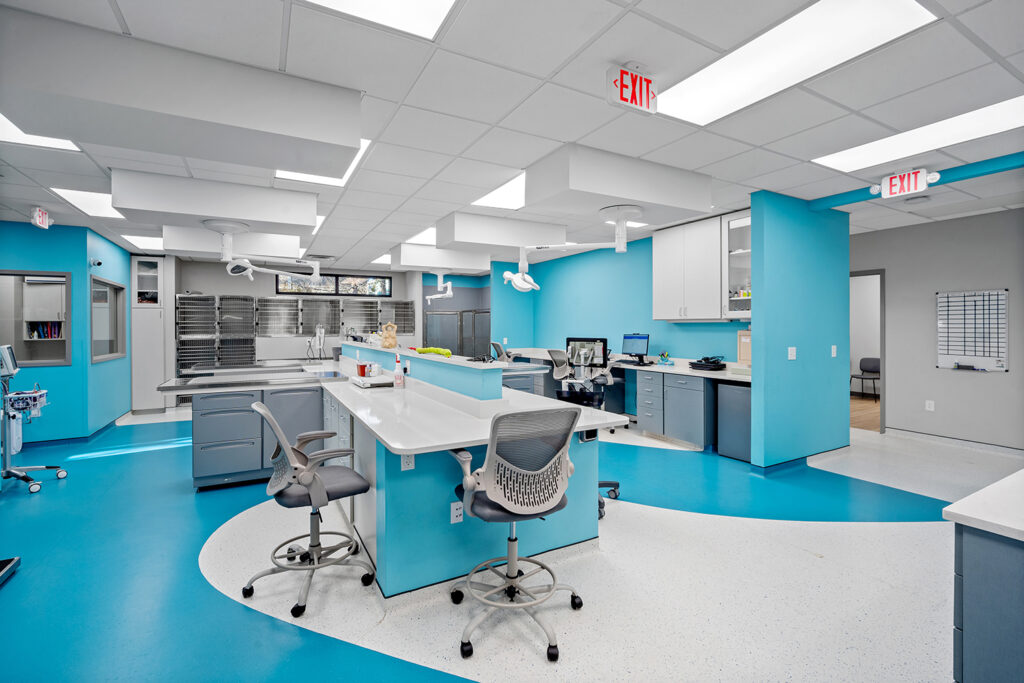
By Frank Chapman
Executive Vice President of Medical Construction
Davie Construction Co.
When you decide to make your dream of opening a practice a reality, we recommend contacting us immediately! Once you have selected the site, you might find it more logical to reach out to us as a general contractor specializing in veterinary construction. But if there is one piece of advice I would give every aspiring owner, it is to include us at the beginning of your planning process. The insight we provide, based on decades of experience and a proven track record, will help you avoid bad decisions that could cost significant time and money.
Location, Location, Location
It’s easy to get seduced by a seemingly perfect location, but there are many variables to consider besides an emotional attraction. Of course, we listen when a doctor tells us where they want to establish their practice. However, we’ll research the area and provide our analysis of its viability and potential for success to support their decision or indicate a need for reconsideration.
We’ll assess the saturation level of the area as determined by the number of homes in a three-to-five-mile radius of the proposed location, the median household income within, the number of existing veterinary practices in the area, and the number of associates at those practices. The equation for a successful business requires 2,500 clients per doctor, with every additional associate requiring approximately 1,500 more clients or an average generated revenue of $500K.
Infrastructure Requirements
Most lease spaces don’t meet the requirements of a veterinary practice or animal hospital without some upfit included in the start-up costs. These are some of the requirements we tend to look at on site:
- Electrical capacity: a minimum of 300-amps to support an X-ray (which uses 125 amps), surgical lighting, and specialty lighting.
- HVAC system: 250 square feet per ton is necessary, and most municipalities require ERVs (Energy Recovery Ventilators) to be used.
- Plumbing: hair interceptors for the main septic lines and washing areas.
Partner with a Realtor Who Specializes
As a GC specializing in veterinary construction, we can recommend buyer agents or realtors in your area with experience helping medical practices of all types identify the most appropriate facilities. Their job is to find the best price per foot based on the negotiated allowances you set for your project. Once the contract is signed, the next step is developing a schematic design.
The Schematic Design Process
We have a system for working with clients that focuses on sufficient planning time, collaborative coordination with other experts, and open communication regarding any areas of concern. We start by working with the doctor and architect on a floor plan that takes about three weeks to develop. Each week, we schedule an hour-long virtual meeting.
- Week 1, we complete a planning matrix questionnaire.
- Week 2, we review the matrix and create an initial floor plan.
- Week 3, we make revisions to and finalize the preliminary floor plan.
This manifestation of the ‘measure twice, cut once’ construction approach ensures we have had time to explore options, solve problems, and develop a comprehensive plan to guide our next steps.
Are you ready to take the next step?
You can contact me at:
Office Direct: (336) 940-6679
Mobile: (336) 466-8726
fchapman@davieconstruction.com
